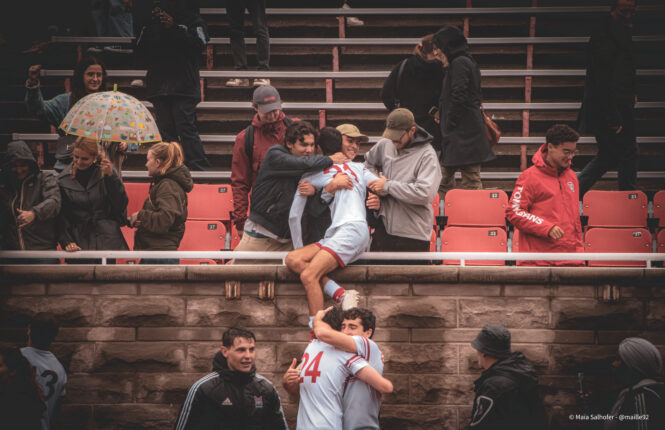Earlier this year, researchers at McGill’s Goodman Cancer Research Centre were looking for funding. Getting creative, they combined a serious message with hip-hop music, dancing, and lip-syncing tenured faculty in a YouTube video titled “McGill Dances for Cancer Research.”
The video, filmed over three days last spring, has gone viral on YouTube since its release in late September, and currently boasts over 300,000 hits. Thanks to sponsorship by Medicom, which is donating one dollar to the centre for every view, the video has already brought in just as many thousand dollars in funding.
Set to Taio Cruz’s “Dynamite,” the video features over a dozen McGill faculty and scientists at the Goodman Centre dancing their way around a normal day at the office at the research center on Avenue des Pins. Researching holding placards with more serious messages such as “Together we can find a cure,” are interspersed between the dancing professors and researchers.
Annette Novak, one of the video’s co-ordinators, explained that the video has other goals beyond targeting donors.
“We were targeting students from other universities in the hopes that they would come here to study and come here to do their research,” she said. Additionally, Medicom’s matching donation process allowed viewers to become involved without donating money themselves.
“It makes people feel like they are partnering with us to raise money,” Novak said. “All you have to do is view this video, share it with your friends, and you, too, can raise money for cancer research.”
Not all members of the cast were enthusiastic when the idea was initially proposed. Concerns of turning serious research into comedy were raised.
“Initially there was some concern because there have been a lot of YouTube videos made by research groups and school groups in general which take on a comedic air, almost trivializing what they do,” Christopher von Roretz, a graduate student in biochemistry who works at the Goodman Centre, said.
Participants were assured that the subject matter would still be portrayed as serious, but the presentation would be light-hearted. According to von Roretz, the final product did just that.
“I think the resounding image [was] that we are optimistic but that we are dealing with a deadly disease by working together,” he said.
Reactions to the video, and its success, from participants has been overwhelmingly positive. Phil Gold, Executive Director of Clinical Research at McGill’s Health Centre and participant in the video, enjoyed participating and was satisfied with the final product.
“The kids were terrific and the post-production was great,” he said via email. He added that faculty members were also pleased with the outcome.
“The video that came out of it was something that I think we participants could never have expected—the energy, the optimistic feel to the video, but also the encouragement, the positive vibes it gave off,” von Rorentz said.
The impact of the video doesn’t end with donations to the centre.
“We’re also going to use it as an outreach tool for schools and students,” Novak said. “We’re trying to help promote the interest in science for students so that they can see that science can be fun and that science can be interesting and research can be so helpful to society.”
“Everyone who participated in it appreciated the opportunity to participate and contribute to something that I think will be a legacy for the Cancer Centre,” von Rorentz added.








